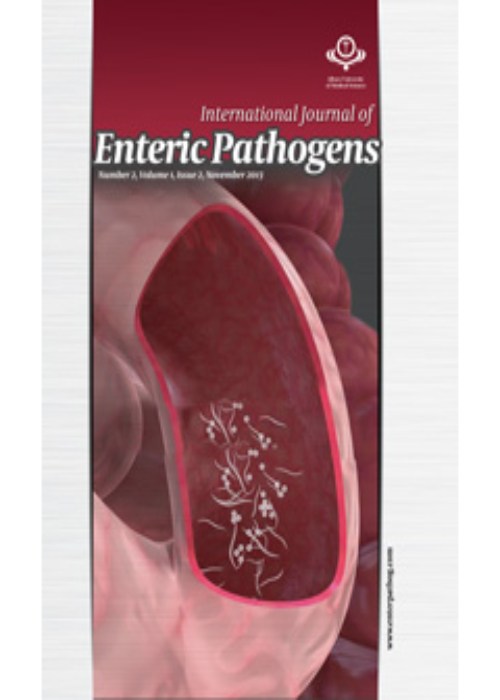Antibiotic Resistance Pattern of Escherichia coli Groups A, B1, B2 and D Isolated from Frozen Foods and Children with Diarrhea in Sanandaj, Iran
Author(s):
Abstract:
Background
Escherichia coli is usually a commensal of the digestive system, particularly intestine of humans and animals. However, there are many reports indicating that some strains are known to cause serious problems causing various infections among children worldwide, particularly in the developing countries. Escherichia coli strains can be classified into four phylogenetic groups: A, B1, B2 and D. The commensal strains are usually placed into the phylogenetic groups; A and B1 and the extraintestinal pathogenic strains into a group B2 and, to a lesser extent, group D..Objectives
The present study aimed to investigate the antibiotic resistance pattern of Escherichia coli groups A, B1, B2 and D from frozen foods and children with diarrhea..Materials And Methods
From 125 frozen foods of animal origin and 466 rectal swabs from children with diarrhea, E. coli were isolated and identified based on standard procedures. Susceptibility testing to antibiotic was carried out according to the CLSI criteria. The phylogenetic group of each strain was determined by using multiplex PCR..Results
In the current study, 47 and 99 E. coli strains were isolated and allocated into four phylogenetic groups (i.e. A, B1, B2 and D). Among the strains isolated from the frozen foods of animal origin, 6.3% were allocated into phylogenetic group B2, and 23.4%% into D. Similarly, among the strains isolated from children with diarrhea 9% were allocated into group B2 and 19% to group D. The data showed that 55.3% and 53.1% of the frozen food-derived E. coli strains were resistant to Tetracycline and Amoxycillin respectively. Similarly, 89.9, 88.9 and 79.8% of isolates were resistant to tetracycline, chloramphenicol, and ampicillin, respectively. By a multiplex PCR procedure different phylogenetic E. coli were detected..Conclusion
Detection of E. coli isolates is very important and shows that food of animal origin can be of a reservoir for resistant bacteria that potentially could be transferred to humans through the food chain. In addition, results of the current study also revealed the detection of resistant E. coli isolates from children with diarrhea..Keywords:
Language:
English
Published:
International Journal of Enteric Pathogens, Volume:1 Issue: 1, Feb 2013
Pages:
1 to 4
magiran.com/p1234348
دانلود و مطالعه متن این مقاله با یکی از روشهای زیر امکان پذیر است:
اشتراک شخصی
با عضویت و پرداخت آنلاین حق اشتراک یکساله به مبلغ 1,390,000ريال میتوانید 70 عنوان مطلب دانلود کنید!
اشتراک سازمانی
به کتابخانه دانشگاه یا محل کار خود پیشنهاد کنید تا اشتراک سازمانی این پایگاه را برای دسترسی نامحدود همه کاربران به متن مطالب تهیه نمایند!
توجه!
- حق عضویت دریافتی صرف حمایت از نشریات عضو و نگهداری، تکمیل و توسعه مگیران میشود.
- پرداخت حق اشتراک و دانلود مقالات اجازه بازنشر آن در سایر رسانههای چاپی و دیجیتال را به کاربر نمیدهد.
دسترسی سراسری کاربران دانشگاه پیام نور!
اعضای هیئت علمی و دانشجویان دانشگاه پیام نور در سراسر کشور، در صورت ثبت نام با ایمیل دانشگاهی، تا پایان فروردین ماه 1403 به مقالات سایت دسترسی خواهند داشت!
In order to view content subscription is required
Personal subscription
Subscribe magiran.com for 70 € euros via PayPal and download 70 articles during a year.
Organization subscription
Please contact us to subscribe your university or library for unlimited access!


